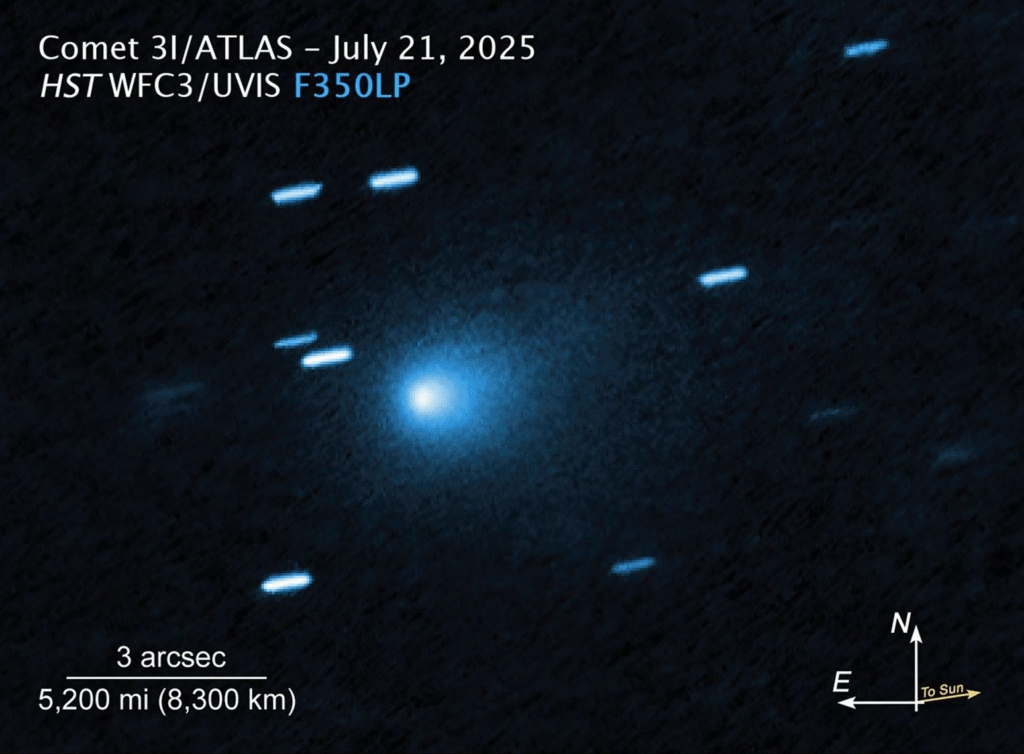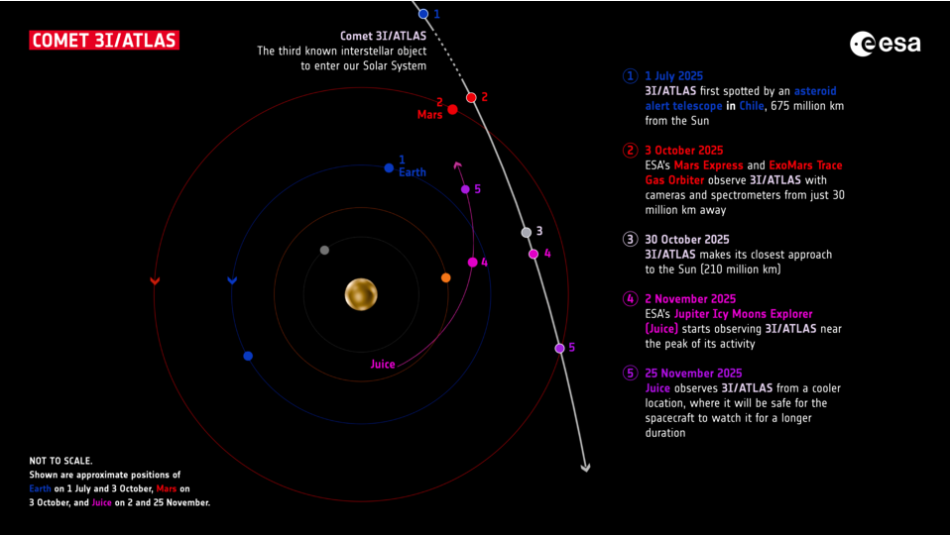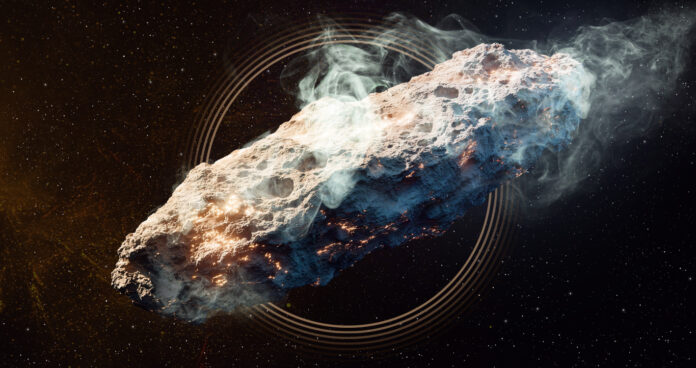Additional Reporting by Daniel Mulila
Every so often the universe throws us a curveball. This time it comes in the form of Comet 3I ATLAS, an interstellar visitor hurtling through our solar system at an incredible 130,000 miles per hour.
Detected on July 1, 2025, by the ATLAS telescope in Chile, it has since captured the attention of astronomers around the world for one extraordinary reason: it is not from here.
3I ATLAS is only the third known object to have entered our solar system from another star system, after the mysterious cigar shaped Oumuamua in 2017 and the comet 2I Borisov in 2019. Measuring roughly 7 miles, or 11 kilometers, across, this frozen traveler is far larger than its predecessors, making it easier for scientists to study. The findings so far have been astonishing.
The comet has exhibited strange behavior not typically seen in ordinary comets. It changes color as sunlight strikes its surface, the icy nucleus reacting by emitting different hues such as green, blue, and orange.

These colors suggest the presence of exotic molecules rarely found in solar system comets, making 3I ATLAS a valuable clue in understanding what materials existed in distant planetary systems billions of years ago.
According to researchers, the comet could be as old as 7 billion years, predating the birth of our solar system by nearly 3 billion years.
It likely formed around a long dead star before being ejected into interstellar space, where it has been wandering ever since. In essence, it is a cosmic time capsule, a survivor from an ancient era of star formation.
The European Space Agency has taken special interest in this celestial visitor. Its ExoMars Trace Gas Orbiter and Mars Express missions have already redirected their cameras to observe 3I ATLAS as it passed about 30 million kilometers from Mars. Scientists hope these images will reveal new insights into the comet’s composition and structure.
This interstellar encounter has also renewed excitement around the Comet Interceptor mission, set to launch in 2029. The spacecraft will wait in space, ready to chase down the next interstellar object that drifts into our solar system.
While 3I ATLAS is not likely to bring alien messages or science fiction surprises, it offers something even more profound, a glimpse into the deep past of the galaxy and a reminder that the universe is far older, stranger, and more connected than we ever imagined.




















